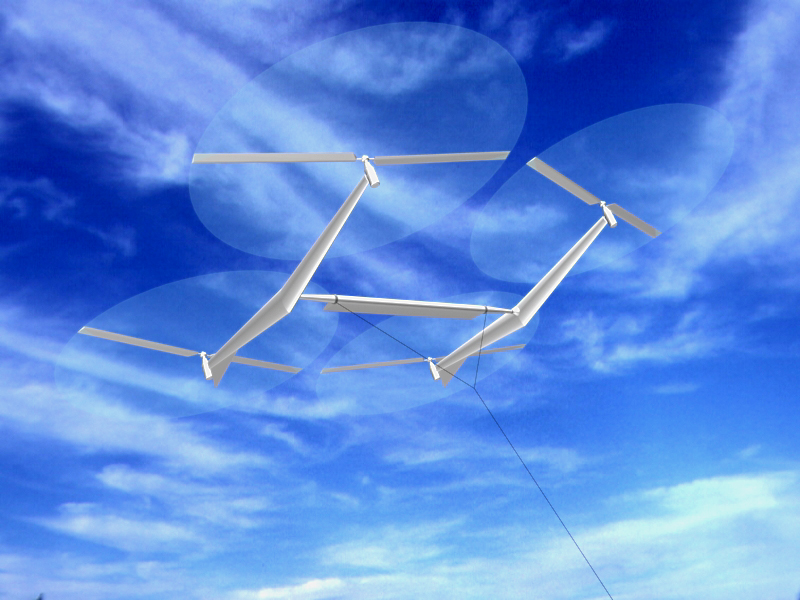
The winds in high-altitude jet streams hold roughly 100 times more energy than all the electricity being consumed on Earth at any given moment, according to a study by Stanford environmental and climate scientists Cristina Archer and Ken Caldeira.
The trick is to capture all that energy. One of the possibilities that designers are exploring is high-flying wind-turbine kites.
Tethered kites would float high enough for powerful jet streams to flow through their turbines more than 10 times faster than winds would flow near the ground. The spinning rotors of the kite turbines would convert the wind’s kinetic energy to electricity and send it back down the wire 30,000 feet to a distribution grid.
The researchers believe that there’s unlimited energy higher up in the sky and it could be cost competitive and reliable. “If you tapped into one per cent of the power in high-altitude winds, that would be enough to continuously power all civilization,†Caldeira said. In comparison, similar solar cells would cover roughly 100 times more area than a high-altitude wind turbine, he said.
In order to arrive at this conclusion, the researchers analysed 27 years of data from the National Center for Environmental Prediction and the European Centre for Medium-Range Weather Forecasts. By studying the distribution of wind power in the atmosphere, by location and time, they found that winds at altitudes around 32,000 feet have the highest wind power density.
Japan, eastern China, the eastern coast of the United States, southern Australia and north-eastern Africa concentrate the highest wind densities. The wind energy above Tokyo, New York, São Paulo, Seoul and Mexico City, the world’s five largest cities, was also analysed. “New York has the highest average high-altitude wind power density of any U.S. city,†Archer said. Tokyo and Seoul also do while Mexico City and São Paulo have less wind density for being located at tropical latitudes.
There are two models being developed to harness high-altitude wind power. Sky Windpower has designed a model consisting of a single tethered kite of four connected turbines, each with spinning rotors. The kite transfers the electricity back to a hub on the ground through its tether.
Elsewhere Kite Gen has developed a model that looks like a rotating carousel, based on the ground, with several kites tethered to it. Each kite’s flight pattern is controlled from the ground to capture the most wind, and as the kites circle in the air, they catch the wind and tug on their tethers. The tension triggers a pulley system that converts the energy of motion to electricity.
It’s not all plain sailing, though. High-altitude wind can also be affected by intermittency. It is more consistent, says Caldeira, but not consistent enough. As a solution, Archer and Caldeira suggest a large-scale electrical grid to transfer excess energy to areas that have more demand than production.
“Winds are always blowing somewhere, so if you had a large enough electrical transmission grid you could transmit the electricity from where it is blowing to where it isn’t blowing,†Caldeira said.
As to the airplanes that would be flying on the same level as the kites, utilities could obtain flight restrictions about air space, like nuclear power stations and refineries do.
Watch: The Future of Wind Power video featuring Cristina Archer





